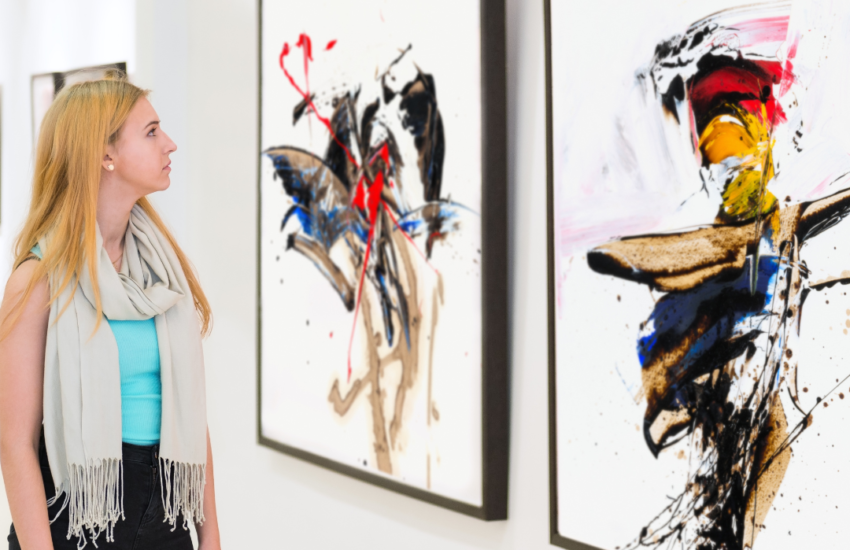The Artistic Styles of Art Deco
The era after World War I was known as the Roaring Twenties. Homes were decorated in decadent Art Deco style with lots of chrome, shiny black lacquer, and the color blue. The style became known as “Modernism.”
Art Deco is an artistic movement of architecture and interior design that emerged in France shortly before World War I. It used simple geometric forms, bold geometric shapes, and daring color combinations to make artwork and objects both exciting and visually appealing.
What Is Art Deco?
Art deco is all about line, form, and texture. Designers and architects used bold geometric shapes, elaborate ornamentation, and bold colors to create a striking aesthetic. They used forms that resembled modern machinery, including streamlined curves, streamlined surfaces, and streamlined angles. They used decorative motifs that were ornate and stylized, including ziggurats, zigzags, chevrons, and s-curves.
What Are the Different Art Deco Styles?
The Art Deco style’s desire for a simple geometric design, combined with highly decorative patterns, gave the style its distinctive look.
- Zigzag – The zig zag, or zigzag, is one of Art Deco’s most fascinating and distinctive patterns. Often seen in geometric cabinet knobs, it resembles a figure 8, with a curved line at the top and a straight line at the bottom. The zigzag pattern’s distinct appearance makes it stand out from other Art Deco styles, and its dynamic lines give it a modern feel.
- Classic modern – Classic modern is a style in art deco styles. Art Deco is a style of art that was popular between 1925 and 1939. Art Deco influenced several different cultures, including French art nouveau, Dutch Rococo, Japanese art, and Indian art. Art Deco was mostly used in architecture, interior design, graphic design, industrial design, and graphic design. This style was very dramatic. It used geometric shapes and vivid colors.
- Streamline moderne – Streamline Moderne, also known as Art Deco, such as Boeing, is an eclectic architectural style that emerged in the late 1920s or 1930s. Although Art Deco styles first appeared in Europe and the United States, they spread worldwide, thanks to advances in transportation that brought people together. Streamline Moderne architects used contrasting materials like glass and metal to create a streamlined look.
How Do You Identify Art Deco?
While Art Deco-style buildings can be found all over the world, they’re most easily recognized for their use of geometric shapes, bold lines, and flashy colors. Art Deco buildings were often designed to attract attention and placed in busy urban areas, where passersby would naturally gather. For this reason, Art Deco buildings are often easy to spot, even from afar.
Art Deco is a distinctive style of art and architecture characterized by sunny, geometric forms and streamlined, colorful designs. Look out for rounded shapes, clean lines, and geometric patterns. This style was often used on buildings but was eventually applied to furniture and other decorative objects.
Art Deco, being a style, was various at times. The designs ranged from very modern, machine-like, geometrical, and streamlined to very classical, decorative, and architectural. Many artists engaged both styles. These artists were influenced by their belief in “art for art’s sake.”
What Is an Example of Art Deco Style?
It featured geometric shapes and vibrant colors, but some of the movement’s most well-known designs have their roots in West Africa, which gave the movement its name. In West Africa, the Art Deco style was used for both functional and decorative purposes. In Mali, for example, Art Deco tile designs can be found in mosques, and in the Ivory Coast, geometric Art Deco designs are used in mud huts that serve as homes.
Art Deco style is characterized by crisp lines, simplicity, and geometric shapes. The Art Deco style’s four main characteristics: symmetry, repetition, rhythm, and asymmetry. Symmetry can be found in all Art Deco design elements, from furniture to light fixtures. Repetition includes the repetition of lines and shapes, and this plays a large role in creating rhythm. Lastly, asymmetry refers to using the negative space to create an illusion of movement.
States and other parts of the world. Art Deco is characterized by clean, geometric lines, asymmetry, and pastel colors and is associated with luxury. This artistic style also emphasized craftsmanship, symmetry, and movement, qualities reflected in the geometric and curvilinear forms of Art Deco’s artwork.



